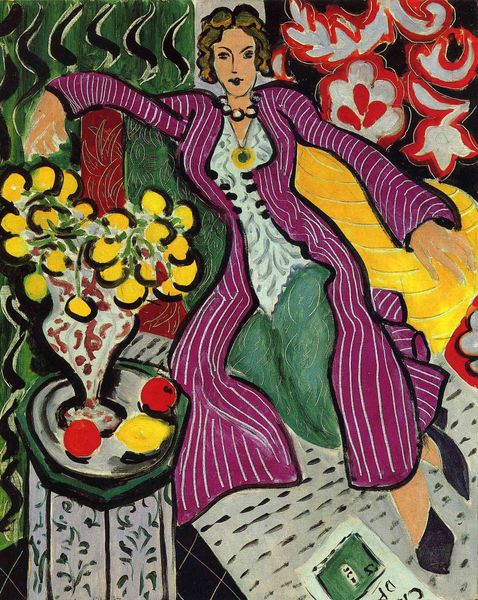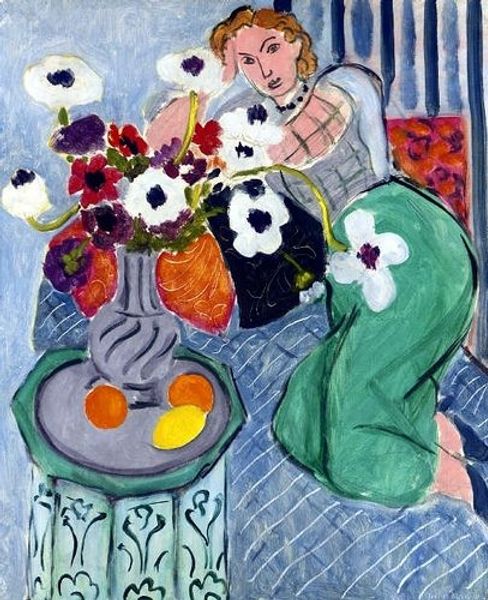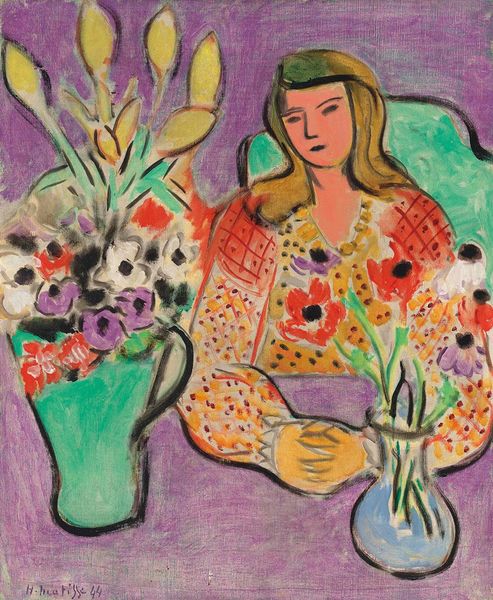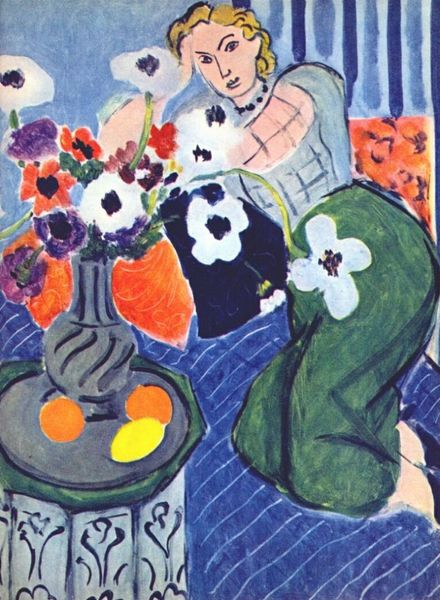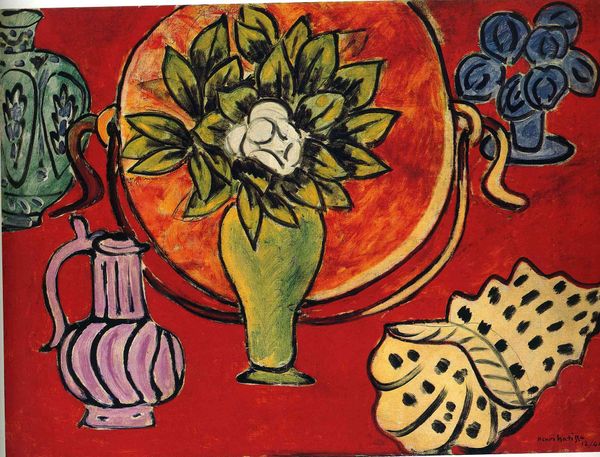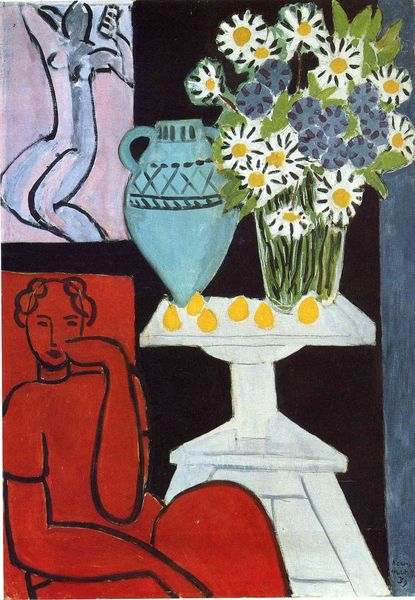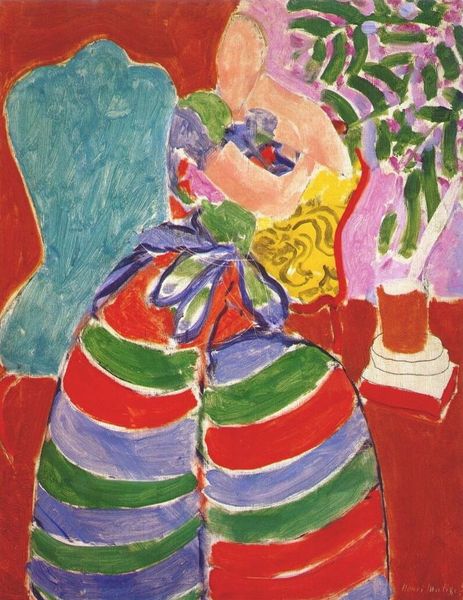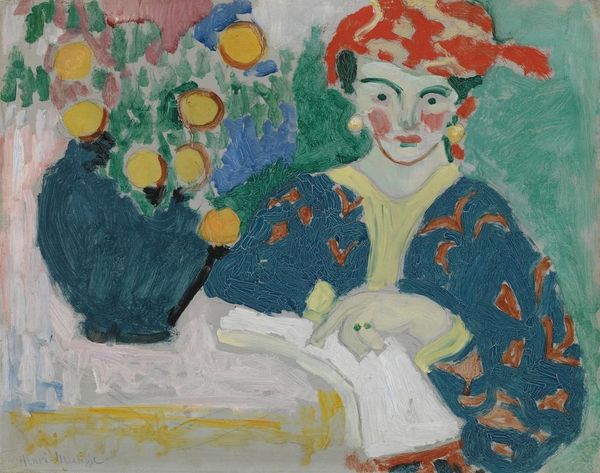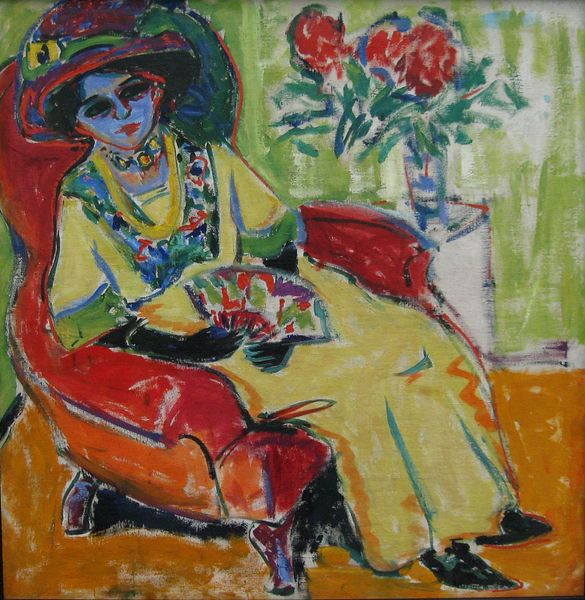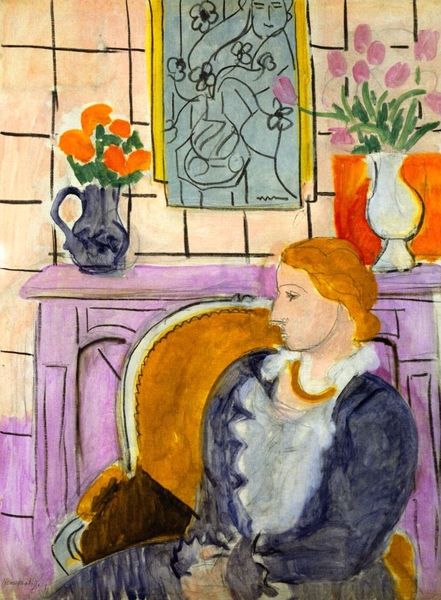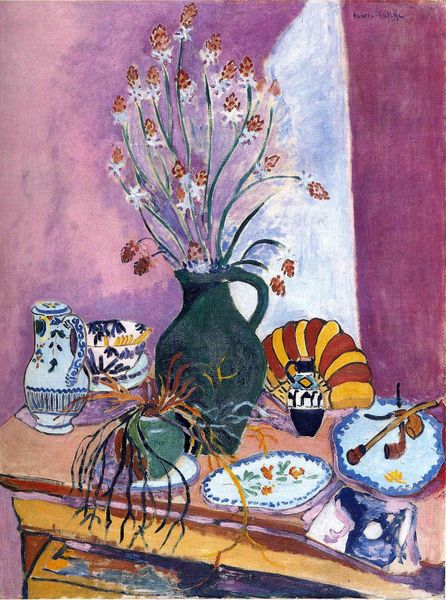
Copyright: Henri Matisse,Fair Use
Curator: Looking at Matisse’s “Purple Robe and Anemones” from 1937, what's your immediate impression? Editor: There's a casual domesticity that disarms me, a sense of feminine interiority bursting with vibrant colors, like a room buzzing with unspoken secrets. It feels like peeking into someone's private world. Curator: That's interesting because Matisse made this rather late in life and during a difficult time. World War II was looming, and Matisse was grappling with personal health issues. I see this as an act of defiance through pure visual pleasure. Editor: Absolutely. These women, often nameless, became emblems of resistance against the impending darkness. There's also the historical backdrop. Purple dye, for example, used to be rare and expensive, associated with royalty. Here, it's democratized, playfully gracing a robe in an intimate, domestic space. Curator: I’ve always wondered, who were these models anyway? Were they muses, collaborators, or just passing acquaintances? The expression in these portraits always feels so mysterious and unknowable, but perhaps that is Matisse's point. There is so much playful abstraction. Like, that is totally a fruit bowl but also maybe just a grey blob. Editor: Perhaps unknowability is the essence of it. By not fixing the identity of the woman or even the still life in realism, Matisse invites the viewer to contemplate broader issues around being, class, and gender. The robe could also be understood as a form of disguise, a protection. And look at the flowers! Curator: Ah, the anemones. Their fleeting beauty contrasts with the seeming permanence of the robe. The robe, a physical thing, protects, contains, whereas the flowers suggest the ephemeral nature of life. Maybe I'm just feeling dramatic today! Editor: No, I think that's valid. I mean, consider this from a philosophical lens, like Foucault’s ideas of heterotopia – spaces that are simultaneously physical and mental. The painting becomes a kind of sanctuary for considering womanhood. Curator: It’s wild to consider what power can lie dormant, biding its time, in something as quiet as this, or even that a painting like this is worth revisiting at all. I find it so amazing how an artwork can shift in resonance over time, like it lives in us as much as we view it. Editor: Yes, and seeing how artists grappled with similar themes during their lives reminds us of the urgent need to look at current cultural production, like grappling hooks flung back in time to remind us of what has been and can be done.
Comments
No comments
Be the first to comment and join the conversation on the ultimate creative platform.
